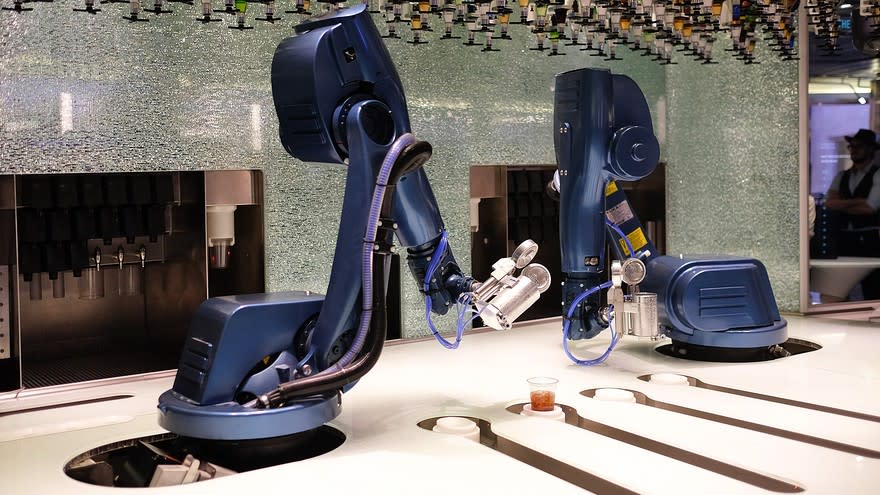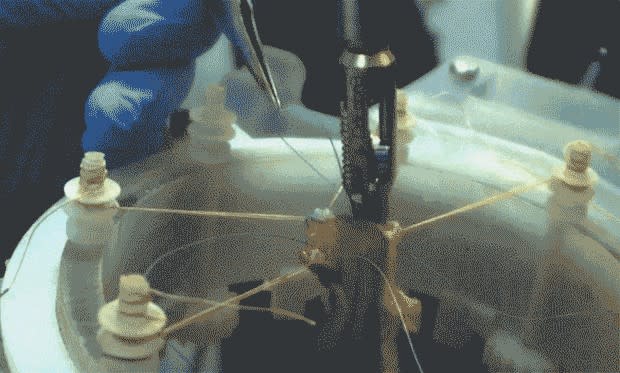Will You Lose Your Job to a Robot?
When voters go to the polls in November, many will be voting for the candidate they think can bring jobs back to the middle class. For nearly 40 years, working class incomes have remained flat, union jobs have eroded and income inequality has risen.
Who’s to blame? Wall Street? The super-rich? Globalization and trade deals?
An artificial intelligence expert at Rice University sees a link between technology and the candidacy of Donald Trump and the popularity of Senator Bernie Sanders of Vermont, who just ended his insurgent run at the Democratic nomination by endorsing rival Hillary Clinton.
Related: Ten Amazing Jobs Robots Can Do
"Job losses due to automation and robotics are often overlooked in discussions about the unexpected rise of outside political candidates like Trump and Bernie Sanders," said Moshe Vardi, director of Rice's Ken Kennedy Institute for Information Technology.
"Manufacturing output in the U.S. today is at an all-time high despite the fact that manufacturing employment has fallen for more than 30 years and is currently around 1948 levels. U.S. factories are not disappearing; they simply aren't employing human workers.… There's increasing evidence that this leads to economic stratification, the decline of the middle class and the subsequent undercurrent of misery that is driving support for Trump."
Share of Underemployed Graduates in Good Non-College & Low-Wage Jobs | CareerTrends
A study published last year by the National Bureau of Economic Research, “Robots Are Us: Some Economics of Human Replacement,” had a dire prediction:
“A second prediction of our model is a decline, over time, in labor’s share of national income. U.S. national accounts record a stable percent share of national income going to labor during the 1980’s and 1990’s. But starting in the 2000’s, labor’s share has dropped significantly. Frey and Osborne (2013) try to quantify prospective human redundancy arguing that over 47 percent of current jobs will likely be automated in the next two decades. They also identify the priesthood, psychotherapy and coaching (parts of our service sector) as among the least subject to automation.”
Related: The Robot Revolution Could Wipe Out 5.1 Million Jobs by 2020
Can a robot do your job? Not in some R2-D2 future. Right now.
The answer in many cases, according to a new report from the consulting firm McKinsey & Co., is that it depends on your occupation and how predictable your work is. But the study contains some surprises and it attempts to be specific about which jobs are most at risk – and which aren’t.
McKinsey looks at what is technically feasible to automate today, and it finds that the work most difficult to assign to a bot involves “managing and developing people (9 percent automation potential) or [work that applies] expertise to decision making, planning, or creative work (18 percent).” In other words, the study says, knowledge work such as software coding, putting together a restaurant menu or writing promotional material.
So all you thinking-out-of-the-boxed-food chefs and slick Madison Avenue copywriters are pretty safe for the moment.
But as further evidence that virtue can sometimes be rewarded, the job least in danger of being wrenched out of our hands by non-humans is teacher. “Of all the sectors we have examined,” study authors Michael Chui, James Manyika, and Mehdi Miremadi write in the July issue of McKinsey Quarterly, “the technical feasibility of automation is lowest in education, at least for now.”
Japan, which has been suffering from a teacher shortage and a general labor dearth, has created a teacher robot named Saya. She taught her first class to 10-year olds in 2009 – 7 years ago. She can be remote controlled to perform in rural areas or even foreign countries. Or she can perform as a substitute teacher.
Still, the jobs most like to be usurped are in accommodations and food service, especially “preparing, cooking, or serving food; cleaning food-preparation areas; preparing hot and cold beverages; and collecting dirty dishes,” the study says. “According to our analysis, 73 percent of the activities workers perform in food service and accommodations have the potential for automation…”
The McKinsey study points to a robot built by Momentum Machines, a San Francisco startup, that can assemble and cook 360 burgers an hour. Momentum co-founder Alexandros Vardakostas told the website Xconomy that the device isn’t about making employees more efficient – it’s about eliminating them.
Related: Not Even Hillary, Bernie or Donald Can Bring Back These Jobs
Manufacturing jobs that still aren’t automated – especially those involving rote work – are also going away. “Production workers performing predictable physical work activities comprise 29 percent of total work in manufacturing, which 89 percent has the potential to be automated,” a McKinsey graphic accompanying an analysis of activities involved in more than 800 occupations says. Translation: Don’t let the factory door hit you on the way out.
Whom should voters believe?
Clinton: Her plan would incent corporations to invest in employees and eliminate tax benefits for companies that move jobs overseas.
Trump: “Trade reform, and the negotiation of great trade deals, is the quickest way to bring our jobs back.”
They both sound hopeful, but they don’t deal with the underlying reality of robots and artificial intelligence replacing human workers.
“You cannot bring back manufacturing jobs that were lost to automation by trade and immigration policies,” Vardi says in an email. “But while you cannot stop the winter from coming, you can prepare warm clothes. As a society, we need to find ways to deal with automation. For example, automation often eats mid-skill jobs, and creates high-skill jobs. But moving up the skill ladder for people without college education can be quite difficult."
Related: This Robot Could Keep Your Grocery Shelves Restocked
Still, the McKinsey study says that while “technical feasibility is a necessary precondition for automation, it is not “a complete predictor” of what will happen. Other factors include: cost of developing and deploying hardware and software; cost of labor and supply-and-demand dynamics in the labor market; plus output and quality.
Other hurdles to automation could be regulatory requirements and “social-acceptance issues,” the study says. Robots may theoretically be able to replace nurses, for example, but patients’ desire for human contact could override whatever the cost savings might be.
However, both the McKinsey study and Vardi say that, as Vardi puts it, “automation will eat white-collar jobs.” McKinsey says if there is a breakthrough in machines understanding natural language, the potential for automation in insurance and finance would jump from 43 percent to 66 percent.
“I am more worried about working-class people without college education,” Vardi says. “For example, in the next 5-15 years, we are likely to automate driving, killing millions of jobs for working-class, college-less Americans.”
And the McKinsey study says, “Robots may not be cleaning your teeth or teaching your children quite yet, but that doesn’t mean they won’t in the future.”
Jobs that Robots Could Do Better Than Humans
At MIT, researchers have published a pair of papers about teaching robots to help nurses and doctors in in a labor ward by making scheduling recommendations.

Bloomberg
Royal Caribbean’s Quantum of the Seas ship serves passengers cocktails by served a dancing robot; the cruise line has added two of these strange contraptions—named the N1-C and the B1-O—to its new ship. –
Market Watch
IEEE Spectrum

In a robotic surgery breakthrough, a bot stitched up a pig’s small intestines using its own vision, tools, and intelligence to carry out the procedure.
Top Reads from The Fiscal Times:
